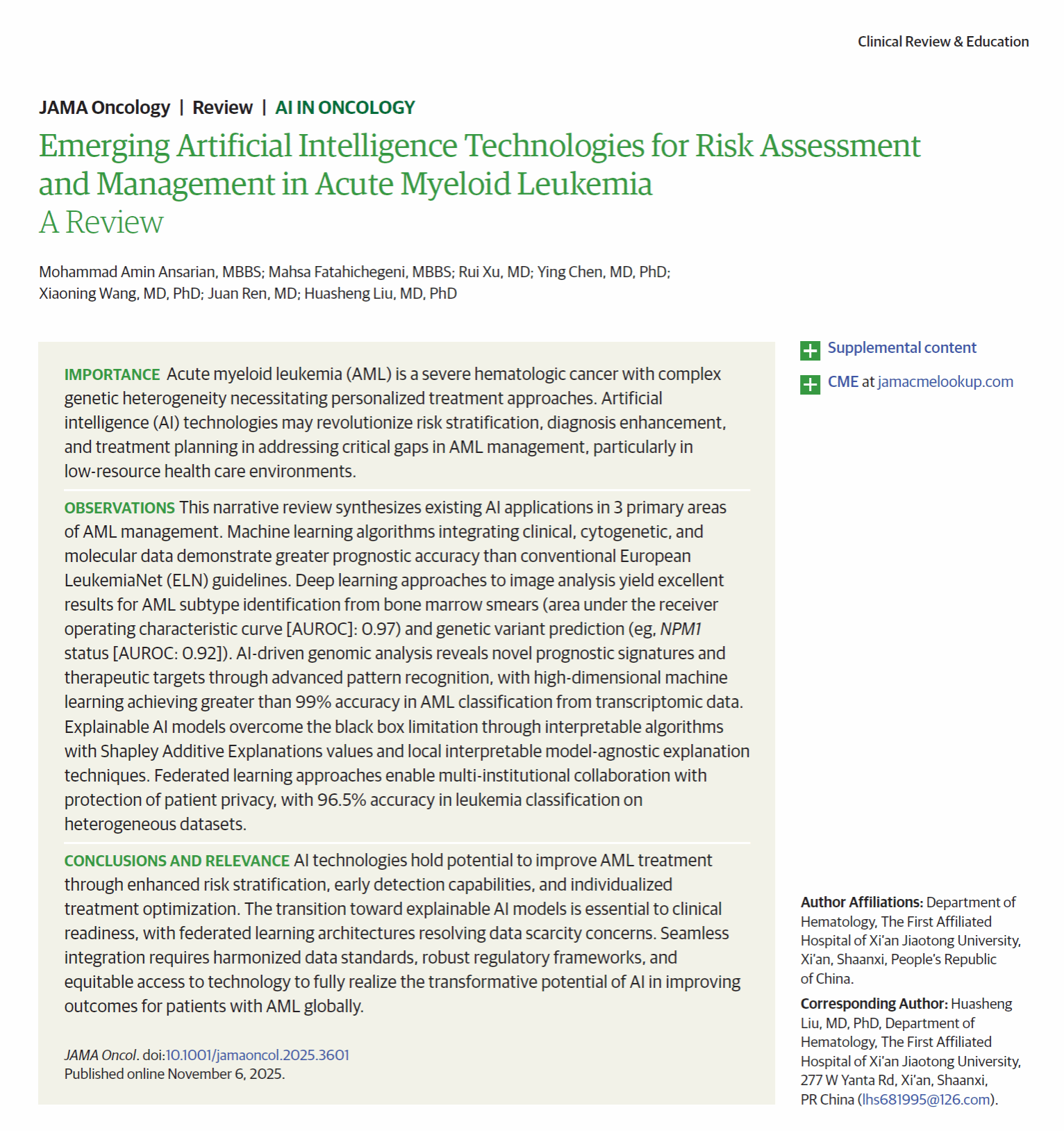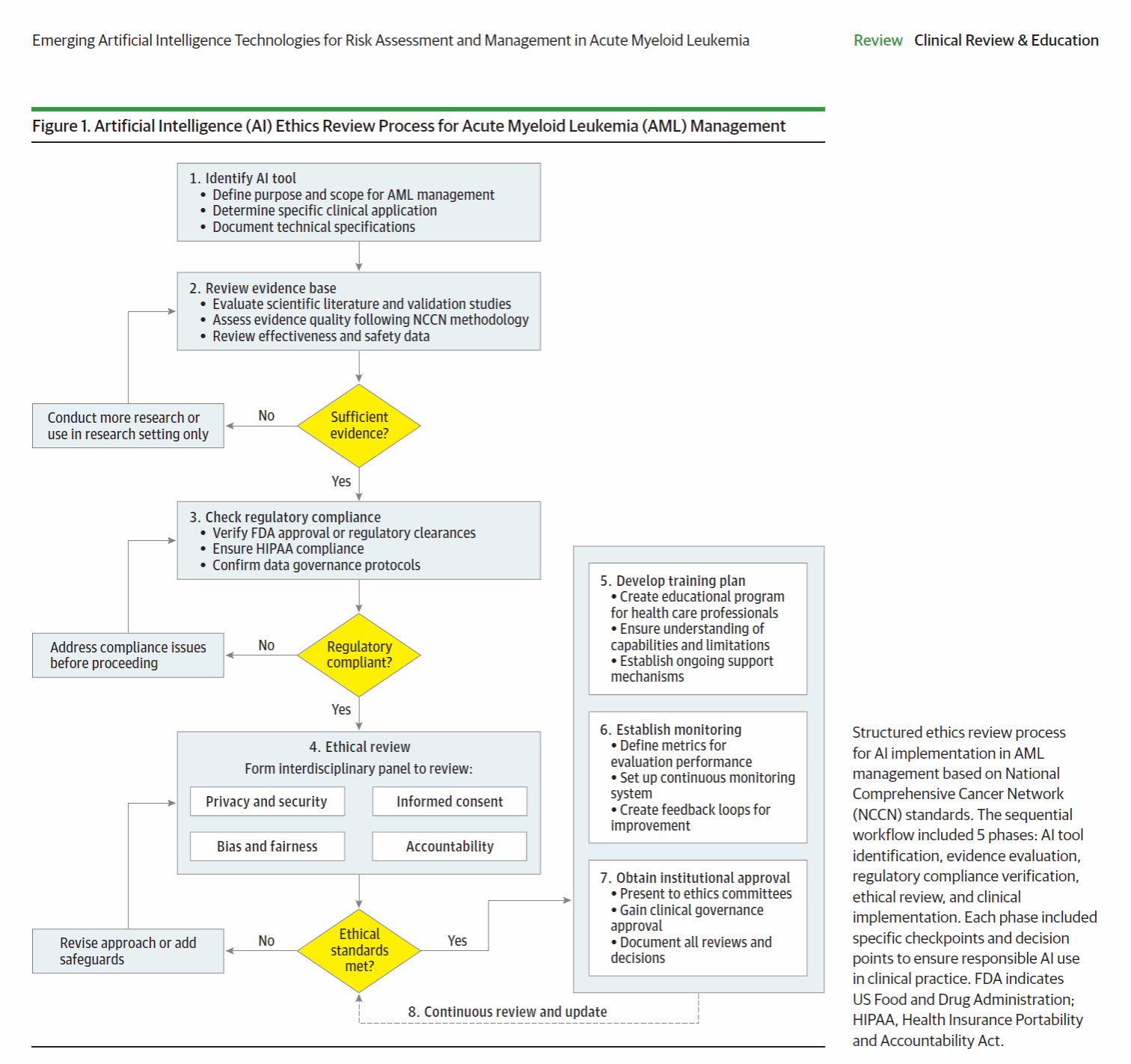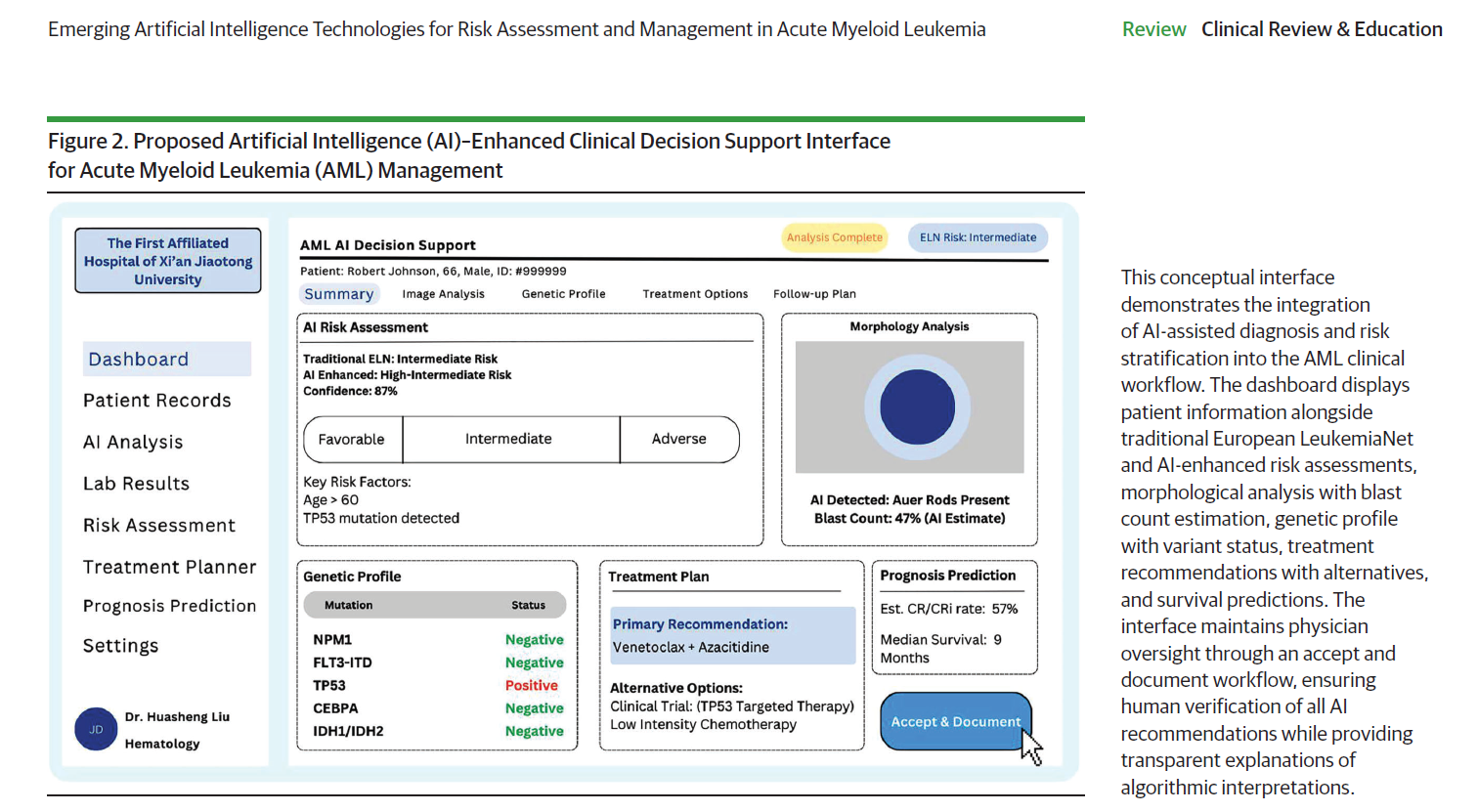On November 6, 2025, JAMA Oncology (2024 IF: 22.3), a leading international medical journal in the field of oncology, published online a review article entitled “Emerging Artificial Intelligence Technologies for Risk Assessment and Management in Acute Myeloid Leukemia: A Review”.
The study was led and supervised by Chief Physician Liu Huasheng of the Department of Hematology, the First Affiliated Hospital (FAH) of Xi’an Jiaotong University (XJTU), who served as the corresponding author. The first author is Mohammad Amin Ansarian, an international medical student interning at the FAH.
Using a comprehensive narrative review approach, the research team systematically synthesized and critically appraised the emerging applications and challenges of artificial intelligence (AI) in risk stratification, imaging diagnosis, genomic analysis, and therapeutic decision-making for acute myeloid leukemia (AML), providing a thorough overview of the latest progress in leveraging emerging AI to empower precision diagnosis and treatment of leukemia. The work offers an important reference for advancing cross-disciplinary integration and innovative development of precision medicine for leukemia and signifies that Chinese research teams are moving toward the international forefront of oncology AI research.

In the paper, the research team systematically reviewed the application of emerging AI technologies in risk stratification, imaging diagnosis, and genomic analysis for AML. The paper notes that machine learning and deep learning algorithms, by integrating clinical, cytogenetic, and molecular data, have markedly improved the accuracy of prognostic prediction. Deep learning platforms achieved an area under the receiver operating characteristic curve (AUROC) of 0.97 for bone marrow cell image recognition, while the accuracy of gene-variant prediction exceeded 92%. These findings provide new intelligent tools for early diagnosis and risk assessment in leukemia.
To address medical data privacy and insufficient model generalizability, the team innovatively introduced federated learning and an explainable AI framework. The study showed that this approach protects patient privacy while achieving a 96.5% accuracy rate for leukemia classification, and, via interpretability algorithms such as Shapley value analysis, makes the model’s prediction basis transparent, thereby enhancing clinicians’ trust in AI decisions. The study also proposed an AI ethics review process that, in a structured manner, emphasizes a clear regulatory pathway, data governance, and human oversight. The role of AI should be to focus on data organization and pattern recognition, while treatment decisions remain physician-led (see Figure 1).

Figure 1
The research team prospectively proposed a conceptual diagram for an AI-based clinical decision support system for AML (AML-AI Decision Support). The system can automatically integrate patients’ clinical information, morphologic features, and genotype data to generate individualized risk assessments and treatment recommendations. Physicians can review the AI analysis report in the system interface and provide manual confirmation, enabling a human-AI collaborative precision decision-making model and offering a blueprint for future implementation (see Figure 2).

Figure 2
This study summarizes the latest technological pathways of AI in AML management and provides a standardized and ethical framework for future intelligent healthcare research. Liu Huasheng stated that, in the future, the team will continue to advance research on algorithm interpretability and clinical translation so that AI becomes a reliable “intelligent assistant” for clinicians.